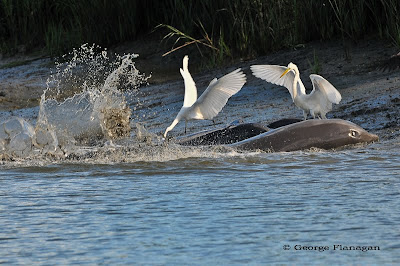Sam & Pete joined me for a photo tour on and around the Chechessee River in Beaufort. We had a great morning with many keeper images here are a few of theirs---Eric
Dawn in the creek @ Spring Island

White Ibis in flight
Great Blue Heron

Brown Pelican in formation
Eric---I had a great time with you the other morning. I'm sending through several of my favorites. One of the things I came to appreciate over the course of the morning was the value you added from your detailed understanding of the tides and creek layout, and the likely behavior of our animal subjects. You were always positioning us with great lighting, and it made for some wonderful shots.
Thank you.---Sam Tutterow
-------------------------------
White Ibis


Oyster Catcher in flight

Brown Pelican in flight
Eric--- Thanks again for a wonderful photo outing last week. I am sending along the best of my shots. There is very little post-production other than some cropping in here -- a testament to your ability to position the boat for optimal shooting. I was very pleased to get a few decent Osprey shots and of course the pod of Pelicans was the highlight of the day -- but I think my favorite single photo is the Oystercatcher in flight. The orange eye and beak contrast so well with the green grass. The exposure stats are: F5.6, 1/125th, ISO 100, shot with a Pentax K20D -- it captured the motion well without losing too much crispness around the bird's face and body. ----Peter

















.jpg)
.jpg)

